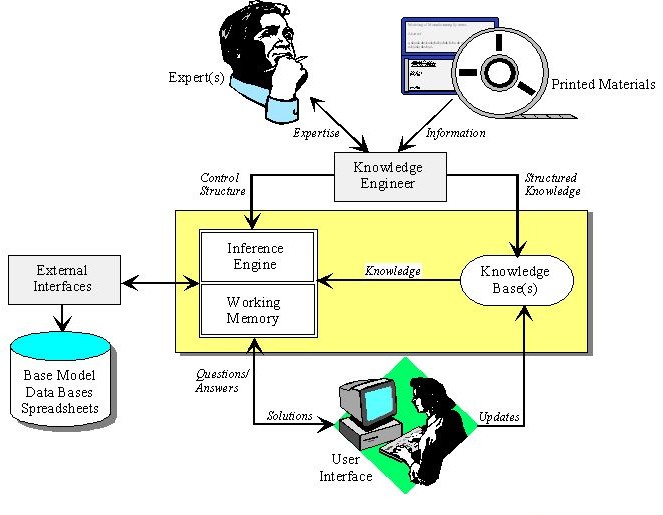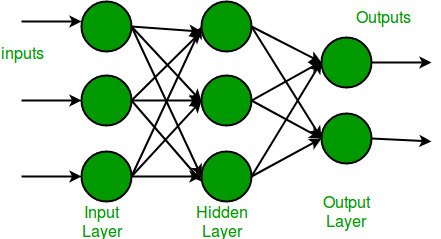
Deep learning algorithms are able to recognize dogs in images by scanning millions of images. Computer programs can even learn how to teach toddlers the word "dog" in just a few weeks. Artificial intelligence is here to stay. Here are some examples of how this technology can help us in our daily lives. Let's now look at some of its applications. Deep learning can help us make better life decisions. But it is important that you understand the costs and time required to run a deep-learning system.
Applications of deep Learning
There are many applications for deep learning. Deep learning is used by artists to create paintings. Deep learning is capable of recognising the style of painters, according to researchers who have used thousands and thousands photos to train them. Deep learning networks can also increase the accuracy of computer vision tasks by up to 96 per cent. However, the most powerful applications are still being developed. Here are some examples of deep learning in action.

Deep learning systems are time-consuming
Deep learning systems have many benefits but also require high resource and time requirements. They require a lot in training data and can take as long as a week to complete. This is a significant problem for both researchers and businesses. Deep learning systems need to be used sparingly in order to resolve this problem. These are just a few examples of the practical uses of deep learning technology. All these applications are possible only if you have a high level computing power and patience.
Bias in deep learning models
Deep learning networks are prone to bias. One example is the bias caused by age in face recognition. Researchers have also shown that the model can be biased by race. For instance, if a black couple poses in a photo next to a gorilla, the algorithm may incorrectly identify the pair as a gorilla. This does not mean that deep learning models cannot be biased. There are many methods to improve the accuracy and reliability of deep learning models.
Deep learning systems cost
The amount of data that needs to be processed increases, so the CPU and GPU requirements for deep-learning systems also increase. It is becoming increasingly costly to store large data sets on high-performance storage. High-performance SSDs can store large amounts of data. The cost of deep learning systems can be lowered by using SSD arrays. However, storage does not determine the cost for deep learning systems. SSDs can be very costly and can quickly add up.

Trends in deep learning
Deep learning usage is changing how we interact and communicate with the world. These technologies can be used to create driverless cars or identify objects in satellite photos. These technologies also have applications for the medical field and in cancer research. UCLA researchers have developed an advanced microscope which generates high-dimensional images. Deep learning applications are improving the detection of cancer cells through cancer research. Deep learning technology can also be used to improve worker safety in heavy machinery and speech translation.
FAQ
What are the benefits of AI?
Artificial Intelligence is an emerging technology that could change how we live our lives forever. It has already revolutionized industries such as finance and healthcare. It's also predicted to have profound impact on education and government services by 2020.
AI has already been used to solve problems in medicine, transport, energy, security and manufacturing. The possibilities of AI are limitless as new applications become available.
It is what makes it special. It learns. Computers learn independently of humans. Instead of teaching them, they simply observe patterns in the world and then apply those learned skills when needed.
AI stands out from traditional software because it can learn quickly. Computers can read millions of pages of text every second. Computers can instantly translate languages and recognize faces.
Because AI doesn't need human intervention, it can perform tasks faster than humans. It can even perform better than us in some situations.
2017 was the year of Eugene Goostman, a chatbot created by researchers. It fooled many people into believing it was Vladimir Putin.
This shows that AI can be extremely convincing. Another advantage of AI is its adaptability. It can be trained to perform new tasks easily and efficiently.
This means that businesses don't have to invest huge amounts of money in expensive IT infrastructure or hire large numbers of employees.
How does AI work?
You need to be familiar with basic computing principles in order to understand the workings of AI.
Computers store information on memory. Computers process data based on code-written programs. The code tells the computer what it should do next.
An algorithm is a sequence of instructions that instructs the computer to do a particular task. These algorithms are usually written in code.
An algorithm can be considered a recipe. A recipe could contain ingredients and steps. Each step might be an instruction. An example: One instruction could say "add water" and another "heat it until boiling."
Is Alexa an AI?
The answer is yes. But not quite yet.
Amazon's Alexa voice service is cloud-based. It allows users speak to interact with other devices.
The Echo smart speaker was the first to release Alexa's technology. Other companies have since created their own versions with similar technology.
Some examples include Google Home (Apple's Siri), and Microsoft's Cortana.
What can you do with AI?
There are two main uses for AI:
* Prediction – AI systems can make predictions about future events. A self-driving vehicle can, for example, use AI to spot traffic lights and then stop at them.
* Decision making - Artificial intelligence systems can take decisions for us. As an example, your smartphone can recognize faces to suggest friends or make calls.
Who are the leaders in today's AI market?
Artificial Intelligence (AI), a subfield of computer science, focuses on the creation of intelligent machines that can perform tasks normally required by human intelligence. This includes speech recognition, translation, visual perceptual perception, reasoning, planning and learning.
There are many types today of artificial Intelligence technologies. They include neural networks, expert, machine learning, evolutionary computing. Fuzzy logic, fuzzy logic. Rule-based and case-based reasoning. Knowledge representation. Ontology engineering.
Much has been said about whether AI will ever be able to understand human thoughts. Recent advances in deep learning have allowed programs to be created that are capable of performing specific tasks.
Google's DeepMind unit, one of the largest developers of AI software in the world, is today. Demis Hassabis founded it in 2010, having been previously the head for neuroscience at University College London. In 2014, DeepMind created AlphaGo, a program designed to play Go against a top professional player.
Which industries use AI more?
The automotive industry is among the first adopters of AI. BMW AG uses AI as a diagnostic tool for car problems; Ford Motor Company uses AI when developing self-driving cars; General Motors uses AI with its autonomous vehicle fleet.
Other AI industries include banking and insurance, healthcare, retail, telecommunications and transportation, as well as utilities.
Which countries are leaders in the AI market today, and why?
China is the world's largest Artificial Intelligence market, with over $2 billion in revenue in 2018. China's AI industry is led by Baidu, Alibaba Group Holding Ltd., Tencent Holdings Ltd., Huawei Technologies Co. Ltd., and Xiaomi Technology Inc.
China's government invests heavily in AI development. The Chinese government has established several research centres to enhance AI capabilities. These include the National Laboratory of Pattern Recognition, the State Key Lab of Virtual Reality Technology and Systems, and the State Key Laboratory of Software Development Environment.
China is home to many of the biggest companies around the globe, such as Baidu, Tencent, Tencent, Baidu, and Xiaomi. All these companies are actively working on developing their own AI solutions.
India is another country where significant progress has been made in the development of AI technology and related technologies. India's government is currently focusing its efforts on developing a robust AI ecosystem.
Statistics
- In the first half of 2017, the company discovered and banned 300,000 terrorist-linked accounts, 95 percent of which were found by non-human, artificially intelligent machines. (builtin.com)
- By using BrainBox AI, commercial buildings can reduce total energy costs by 25% and improves occupant comfort by 60%. (analyticsinsight.net)
- In 2019, AI adoption among large companies increased by 47% compared to 2018, according to the latest Artificial IntelligenceIndex report. (marsner.com)
- The company's AI team trained an image recognition model to 85 percent accuracy using billions of public Instagram photos tagged with hashtags. (builtin.com)
- Additionally, keeping in mind the current crisis, the AI is designed in a manner where it reduces the carbon footprint by 20-40%. (analyticsinsight.net)
External Links
How To
How to set Cortana for daily briefing
Cortana can be used as a digital assistant in Windows 10. It's designed to quickly help users find the answers they need, keep them informed and get work done on their devices.
To make your daily life easier, you can set up a daily summary to provide you with relevant information at any moment. This information could include news, weather reports, stock prices and traffic reports. You can choose what information you want to receive and how often.
Win + I is the key to Cortana. Select "Cortana" and press Win + I. Scroll down to the bottom until you find the option to disable or enable the daily briefing feature.
If you have enabled the daily summary feature, here are some tips to personalize it.
1. Open Cortana.
2. Scroll down until you reach the "My Day” section.
3. Click the arrow to the right of "Customize My Day".
4. Choose the type of information you would like to receive each day.
5. Change the frequency of the updates.
6. Add or remove items to your list.
7. Save the changes.
8. Close the app.